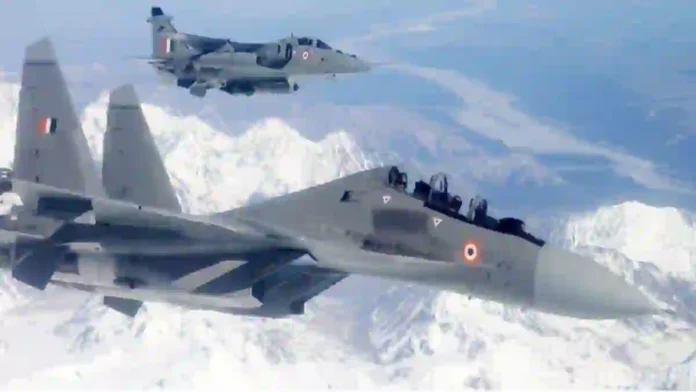The Indian Air Force (IAF) is facing its sharpest decline in combat strength in over six decades, with squadron numbers set to dip below 30 following the imminent retirement of its last two MiG‑21 units on September 26.
This comes at a time when both Pakistan and China are rapidly expanding and modernising their respective air fleets, with the U.S. Department of Defence noting that China alone now fields approximately 1,900 fighter aircraft, making the PLA Air Force and Navy aviation the third largest in the world.
Read- India-Pak Normalisation Without Kashmir Fix Is Fool’s Paradise: Shehbaz Sharif
The long‐standing CCS mandate of 42 squadrons, framed in the 1980s to address the challenge of a two‑front conflict, is now under official review after an internal assessment—conducted in the aftermath of Operation Sindoor—concluded that even this benchmark is inadequate in the face of current regional threats.
Sources suggest a substantial upward revision of 30–35 percent to the existing mandate, potentially raising the future requirement to over 55 squadrons.
Despite this, the IAF has never achieved the 42‐squadron objective, peaking instead at 41 squadrons in 1996 before entering a steady decline. Current operational strength stands at 31 squadrons, which will further contract to 29 post‑MiG‑21 retirement—lower even than the level during the 1965 Indo‑Pak war.
The crisis has been compounded by delays in the induction of the TEJAS MK-1A, which was expected to begin deliveries in March 2024 at a rate of 16 aircraft per year. Hindustan Aeronautics Limited (HAL), however, has so far failed to hand over a single unit, leaving the IAF without a timely replacement for its retiring legacy fleet.
Notably, the MiG‑21 replacement was initially envisioned by 1994, yet four decades later the absence of a viable frontline substitute has eroded combat capability just as regional adversaries field technologically superior jet fleets.
Read- IAF Aiming At Much More Than 42 Fighter Aircraft Squadrons, Says Top Official
Read- Pak Concerns: India’s Continuous At Sea Deterrence Nuclear Fortress In The Indian Ocean
The setback following Operation Sindoor—where IAF’s combat aviation demonstrated both its effectiveness and operational shortfalls—has intensified calls within the military establishment to urgently augment force levels, acquire advanced aircraft, and accelerate indigenous procurement.
Without immediate acceleration of TEJAS MK-1A production, planned TEJAS MK-2, and parallel induction of foreign fighters under the multibillion‑dollar 114 MRFA program, India now risks losing deterrence credibility in a contested air domain where adversaries enjoy both numerical superiority and rapid modernisation trajectories.
IAF Squadron Strength Projection (2025–2040)
| Year | Business as Usual (BAU) | Accelerated Indigenous Induction | Mixed Procurement (Indigenous + Foreign) |
|---|---|---|---|
| 2025 | 29 (post MiG‑21 retirement) | 29 | 29 |
| 2027 | 28 (Jaguar phase‑out begins, slow Tejas delivery) | 30 (first TEJAS MK‑1A squadron operational) | 30 (stable, awaiting MRFA clearance) |
| 2030 | 26 (Jaguar/Mirage retirement exceeds inductions) | 32 (full TEJAS MK‑1A induction offsets losses) | 34 (TEJAS MK‑1A complete + first MRFA deliveries) |
| 2035 | 23–24 (massive drawdown of Jaguar/Mirage/MiG‑29, MK‑2 slips) | 35–36 (MK‑2 enters service, initial AMCA squadron) | 40 (MK‑2 squadrons + half MRFA delivered, early AMCA) |
| 2040 | 25–26 (limited AMCA, upgraded Su‑30 fleet) | 40 (MK‑2 mature, 2–3 AMCA squadrons operational) | 44–46 (full MRFA, MK‑2 mature, 3+ AMCA squadrons) |
IDN (With Agency Inputs)
Agencies




